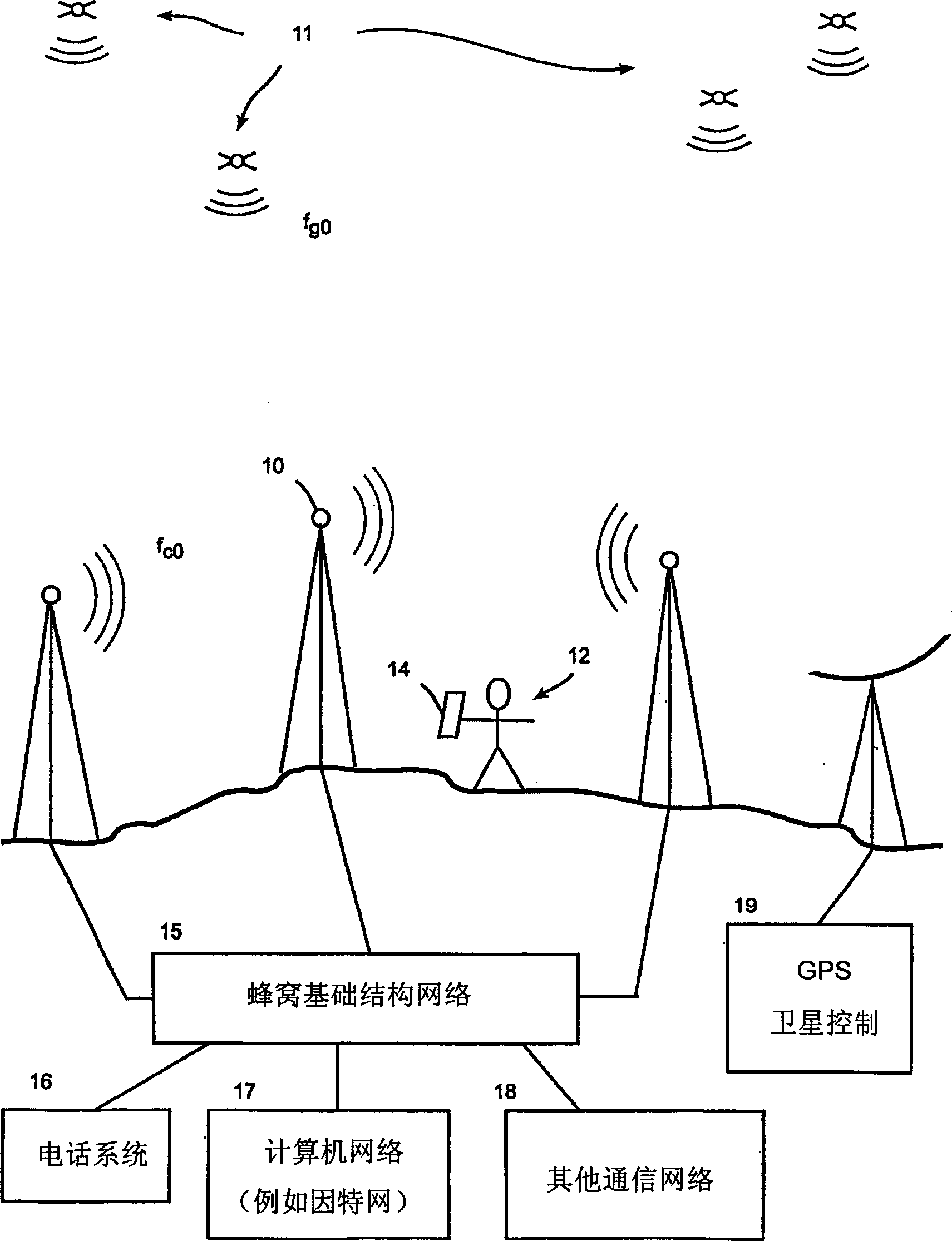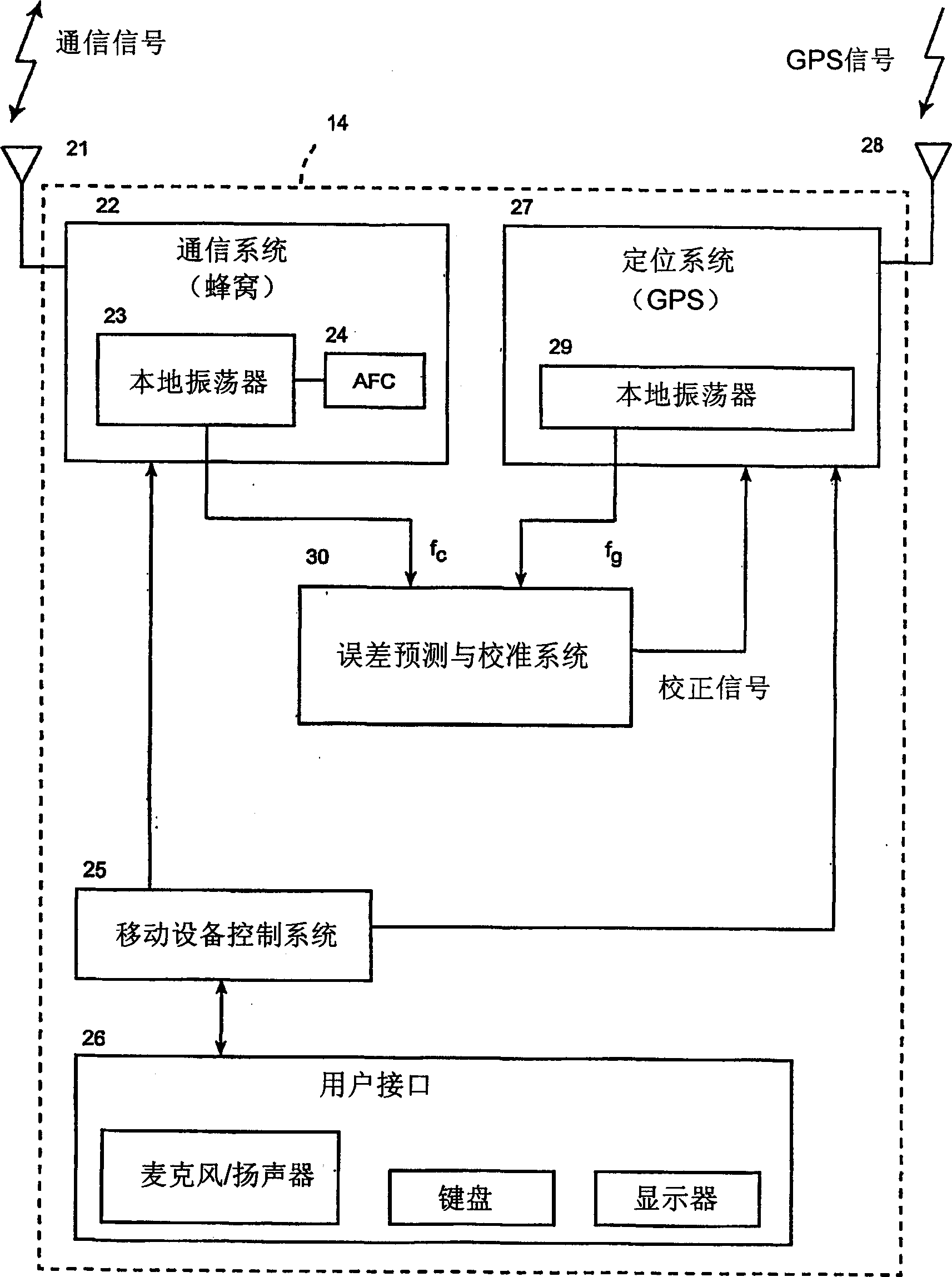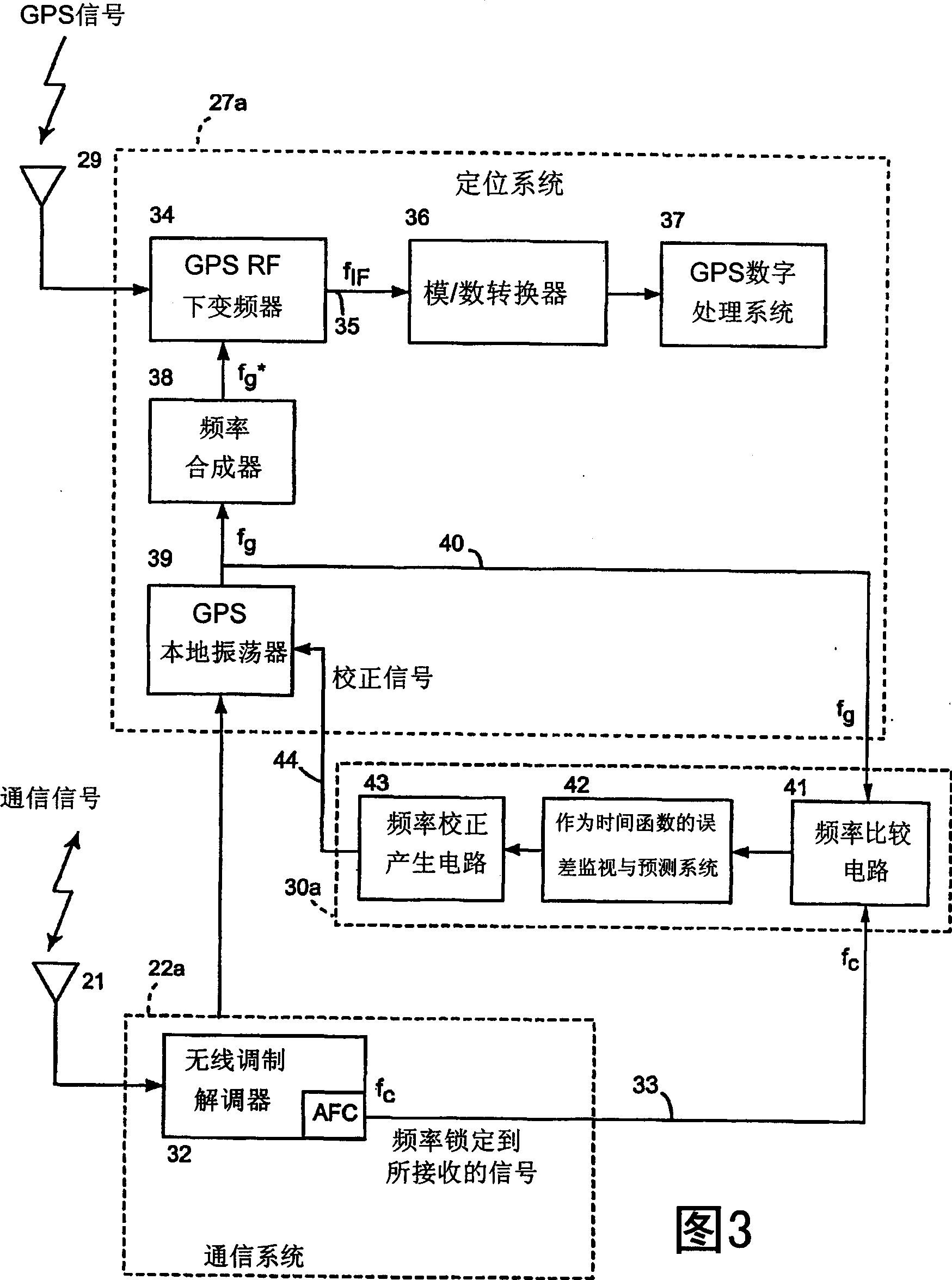Calibration and correction system for satellite position location systems
A technology of frequency and time period, applied in the field of GPS system, can solve the problems such as the deterioration of the efficiency of the frequency locking calibration method
- Summary
- Abstract
- Description
- Claims
- Application Information
AI Technical Summary
Problems solved by technology
Method used
Image
Examples
Embodiment Construction
[0031] The present invention will be described below in conjunction with the accompanying drawings, in which the same numerals represent the same or similar components.
[0032] Glossary of terms and abbreviations
[0033] In the detailed description, the following terms and abbreviations are used:
[0034] base station: A station that transmits a precise carrier frequency, such as a base station in a cellular telephone network;
[0035] Calibration: the process of measuring the error of current time and predicting the error of future time;
[0036] Calibration: pertaining to methods of compensating for errors predicted during the calibration process;
[0037] CDMA: code division multiple access;
[0038] FSK: frequency shift keying;
[0039]GPS: Global Positioning System, although the term GPS is often adopted to refer to the US Global Positioning System, the meaning of the term here and the approach to all devices described here apply equally well to other Global Positio...
PUM
 Login to View More
Login to View More Abstract
Description
Claims
Application Information
 Login to View More
Login to View More - R&D
- Intellectual Property
- Life Sciences
- Materials
- Tech Scout
- Unparalleled Data Quality
- Higher Quality Content
- 60% Fewer Hallucinations
Browse by: Latest US Patents, China's latest patents, Technical Efficacy Thesaurus, Application Domain, Technology Topic, Popular Technical Reports.
© 2025 PatSnap. All rights reserved.Legal|Privacy policy|Modern Slavery Act Transparency Statement|Sitemap|About US| Contact US: help@patsnap.com



